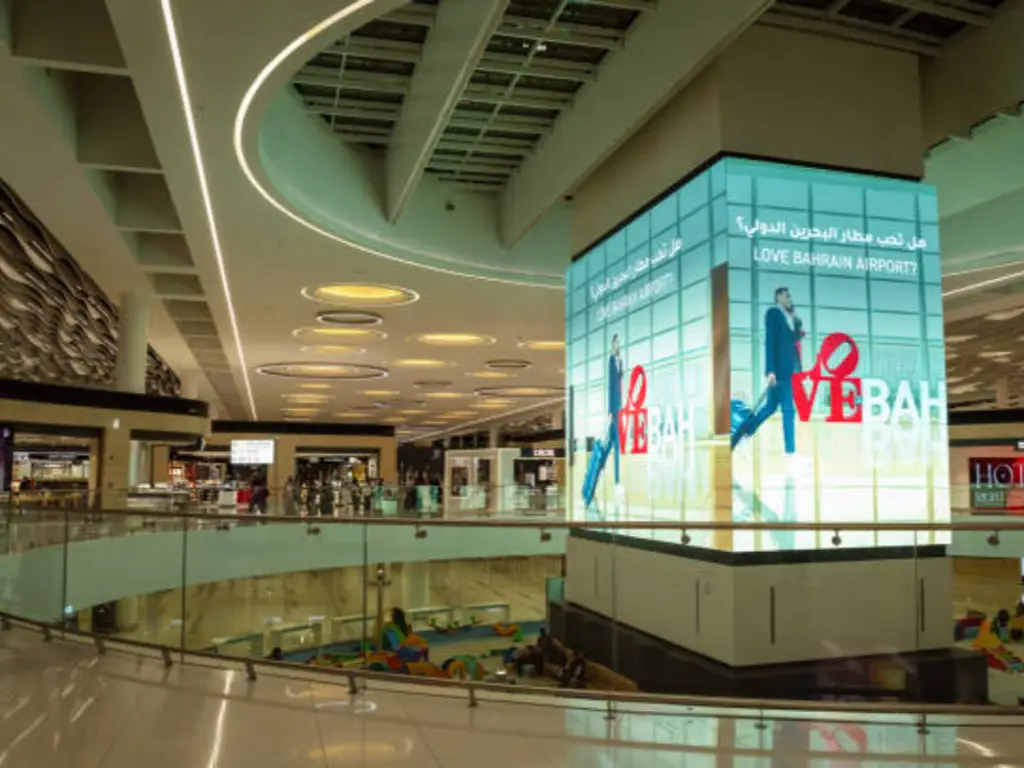Introduction
Today, with the digital transformation of businesses, digital signage is becoming a powerful tool for businesses to engage customers and communicate messages instantly and in real time. Unlike traditional printed signs, digital displays provide interactive and customizable solutions that improve customer experiences, increase brand visibility, and improve operational efficiencies.
Digital signage has become a multipurpose tool for communicating targeted messages, updates, and other time-sensitive information for a variety of domains, from retail and corporate to healthcare and the public sector. The advent of content management systems and other digital signage software has enabled personalized and remote message management. Businesses can now even integrate social media posts.
This article demystifies the digital signage phenomenon. It explains its functionality, components, uses in different industries, and the value it delivers to businesses. If you want to understand the impact of digital signage or want to implement it, this guide covers all the basics.

Beyond the Screen: What is Digital Signage?
Digital signage displays various types of content in a digital format. This includes video, images, text, and even interactive content. Unlike regular signs that display content in a static format, digital signage allows for content to be changed in real time and updated as needed. This technology has been incorporated in various industries, such as retail, corporates, hospitals, and even in public places for ease of communication. This technology has proven beneficial in audience engagement.
Digital signage technology has come a long way. What first started as a simple screen displaying static advertisements has evolved to incorporate interactive digital signs, social media integration, and content that is driven by real-time data. A standard digital signage system includes a content management system, media players, and network infrastructure, which allows the creation, scheduling, and distribution of content. This system enables content to be sent to and displayed on multiple screens simultaneously.
How Does Digital Signage Work? A Behind-the-Screens Look
The digital signage is a term that is used to refer to the entire system of integrating software and hardware in order to present dynamic content on the digital screens. Digital signage, as opposed to the traditional printed signage, involves the use of a network of interconnected components to enable easy content creation, management, and real-time display. The following is the breakdown of its operation:
- 1. Creation of content: This starts with the creation of content and which may be in the form of videos and images, or text content based on data. This material is created using digital content-creating programs on a standard computer, and is done based on the purpose and the intended audience.
- 2. Content Management (CMS): When the content has been created, it is uploaded to the central Content Management System (CMS). This software enables one to arrange the content in the form of playlists, when and where the content will be shown, and which screens or groups of screens will show the content. The CMS allows updates and easy management through a single point, which is usually remote.
- 3. Content Distribution (Network): Once the time to play content comes, the CMS transfers the files on the schedule and play directions through a network – Wi-Fi, Ethernet, 4G/5G. The network will make the content reach the relevant places in a fast and efficient manner.
- 4. Playback (Media Player): The CMS passes the content to the media player, which is a small yet powerful computer that serves as an interface to the digital display. It caches and deciphers the files and leaves the content to the display as per the set schedule. The media players are adaptable in the form of content they can accommodate, which serves to guarantee a range of content displayed.
- 5. Display (Digital Signage Screens): Lastly, the digital display or screen presents the audience with the content. This may be a single screen in a retail store or a large video wall in the open area. It is translated in real-time and, understandably, according to the directives of the media player.
The whole system is usually checked remotely so that the screens are operational, and the content is being shown at the right time. Through this arrangement, companies are able to make relevant messaging, provide real-time updates, and get audiences involved in new and interactive means and all possible due to the smooth integration of technology.
Types of Digital Signage Displays in 2025
With the ever-changing technology, the range of choices of digital signage displays that businesses can use by 2025 has greatly increased. The recent developments in display technologies give more realistic and engaging experiences to businesses and their audiences. The following are some of the most used forms of digital signage displays:
LED Displays
The most popular kind of digital signage screen is LED displays because of their high brightness, energy saving, and long duration of life. These screens would suit busy places like shopping centers, bus terminals, and other social spaces. Large-scale applications such as video walls and outdoor advertising are usually done with LED screens due to their bright colors and great visibility under any condition of lighting condition.
LCD Displays
LCD has remained a popular option for indoor digital signage, especially in retail stores and business offices. The displays have clear, crisp images, high contrast, and broad viewing angles, and are therefore very suitable for displays of special offers, brand messages, and product promotions. LCD screens are usually applied in locations where the content should be viewed over long periods of time and in varying directions.

Interactive Displays
Interactive digital signage has become popular, especially in general areas and shopping centers. These systems enable customers to interact with the content in real-time, and that is by interacting with the screen either by browsing the products, taking surveys, or making transactions. Interactive displays also enhance customer interaction and offer a more personal experience due to the ability to have user input and deliver content in a more personal manner.
Touchscreen Displays
Touchscreen displays are also popular in industries such as hospitality, healthcare, and education, offering an easy-to-use interface through which users can navigate content. The displays find special uses in meeting room booking systems, wayfinding, and emergency alerts. Touchscreens help users navigate through information fast and efficiently, hence they are the best to use in any environment where direct and fast interaction is a necessity.

Outdoor Signage
Outdoor digital displays, also known as weatherproof and sun-resistant displays, provide great value for open spaces. Outdoor displays are fitted with tough enclosures and special protective measures that include UV, water, and dust-proofing to defend against weather and environmental changes. This means that the screens can function without interruption in severe conditions. These screens provide real-time, dynamic content for outdoor advertising, tourist attractions, and even public transit stations.
Shelf-edge Displays
Shelf-edge displays are a new kind of digital signage, and are usually placed on the sides of shelves of retail outlets, and are directly facing the customers. Product information, promotion, or inventory can be displayed using these displays to make retailers sell more products. The shelf-edge displays will not only attract the attention of the shoppers but also provide instant and personalized promotional messages and improve the shopping experience, leading to customer interest.

Projection-Based Displays
Projector-based digital signage is a new development, especially in businesses that desire to develop multimedia content that is rather immersive. Contrary to conventional screens, projection-based systems can project dynamic visuals onto walls, floors, or other surfaces, forming a very impressive display. This kind of signage is best suited to event marketing, interactive brand experiences, or any other situation where there is a need to make large-scale presentations in visual form.
Elevate Your Brand with ZhSunyco® Digital Signage Solutions
As we enter 2025, ZhSunyco® continues to personalize digital signage advancements for businesses to incorporate into their marketing strategies. We design customized solutions integrating E-ink displays and LCD screens into digital signage tailored to specific business needs.
- E-ink displays are great for environments that demand low power usage, high readability, and the ability to view a document for extended periods. E-ink displays are perfect for healthcare and retail settings.
- We also have LCD screens for interactive displays and digital kiosks, which need to show high-resolution content. Indoor environments and kiosks use LCD screens for customer engagement through real-time updates, navigation systems, and promotions. They are reliable for active displays.
- Integrating LCD screens with our Electronic Shelf Labels (ESL) systems enables monitors to stream real-time prices and promotions while displaying information. These systems provide a versatile solution aimed at retailers, enhancing customer and operational efficiencies in-store.
With 12+ years of experience and expertise in the digital display solutions industry, we have served over 180 countries. Zoned and tailored solutions will enhance customer engagement and create a smart, interlinked space in the quickly connected world.
Want to transform your business’s digital signage? Reach out now and let ZhSunyco® design a tailored solution for your company!
Where Is Digital Signage Used? Industry-Specific Applications
Digital signage is extremely flexible and can be applied in any industry to promote communication, increase engagement, and improve customer experience. To have a closer look at the usage of digital signage in some of the most important areas in 2025, we can look at the following:
- 1. Retail Stores: Digital signage has a significant role in retail as it provides interesting in-store experiences. Customers are also able to view promotions, products, or even make purchases using interactive displays. Digital signage content may be designed to be displayed at various times of the day, season, or even sales occasions, and the special offers and brand awareness message will be shown to the appropriate audience at the appropriate time.
- 2. Healthcare Facilities: The digital signage is adopted in hospitals and clinics to tell patients about waiting time, health tips, or emergency announcements. It is also useful in the spread of information in big and complex environments, where it may not be easy to read or navigate traditional signage. It is possible to have interactive digital signage where patients and other visitors can easily get the needed information, including directions, services, and updates of the facility.
- 3. Corporate Offices: Digital signage can also be used to improve internal communication through real-time updates, announcements, and the availability of meeting rooms. Employee engagement is also done through it by displaying the internal achievements, or future activities, and even wellness programs.
- 4. Public Areas: Airports, train stations, and other public areas depend greatly on digital signage to offer real-time data, like flight times, delays, or announcements about the services offered to people. Such environments have the advantage of being able to update content in real time and allow travelers to remain informed and eliminate confusion.
- 5. Education: Digital signage is applied in schools and universities to announce, promote an event, or display real-time information. A school could use digital signage, an example of which could include providing student information about the scheduling of classes, campus happenings, or alerts of emergencies. There is also the use of interactive media systems to improve the learning experiences and offer immediate access to learning materials.

Digital signage is changing the method of communication with the target audience in businesses and organizations, whether it is healthcare or retail. Its versatility and ability to adapt to varying industries render it an efficient ploy in enhancing engagement and provision of information at the right time.
Benefits of Digital Signage for Businesses
In today’s competitive landscape, digital signage offers numerous benefits that can significantly enhance business operations. Here are some of the key advantages:
- Real-Time Updates & Automation
Digital signage can display information that can be updated instantaneously. Whether it is new arrivals, special promotions, or updates that require instant attention, digital signage helps customers be informed in real time. In addition, CMS (Content Management Systems) has automation features that help schedule content, so less time is spent manually changing content.
- Increased Engagement & Sales
Dynamic digital signage can be designed to engage customers and facilitate the exploration of products digitally, the retrieval of additional information, and participation in promotions. Enhancing customer engagement in this manner can help direct increases in sales. Businesses can even make use of QR codes that link directly to sales websites or loyalty programs for fast sign-up, and encourage sign-up and purchase completion for promotions. Engaging customers in this manner can facilitate easy purchase completion and sign-up for the loyalty program.
- Better Internal Communication
With large teams and multiple locations, a company must utilize internal communications effectively. Efficient internal communications could be accomplished through digital signage. It can show meeting room availability and be used for employee announcements. It can share messages uniformly within all departments. It can also promote company performances, recognize employee accomplishments, and announce upcoming events.

- Reduced Print Costs & Waste
There is no longer a need for printed flyers and posters for each promotional event. Digital signage cuts printing and shipping costs, reduces business waste, and saves money. This approach is also sustainable since there is no printed content out of date. Waste is further reduced since digital signage content is easily updated, eliminating the need for obsolete printed signage and promoting sustainable business practices.
- Targeted Messaging and Analytics
One of the distinctive features of digital signage is its ability to deliver targeted messages. Through audience analytics and various data sources, businesses can customize content for particular audiences, behaviors, and even the time of day. Whether you wish to direct marketing messages at retail stores and employees or display digital signage promotions to employees, digital signage is flexible enough to shift messages to meet the needs of particular people at a particular time.
Best Practices for Creating High-Impact Digital Signage Content
High-impact content for digital signage is more than striking visuals. It is content that communicates, captivates the target audience, and compels them to take action. Below are some best practices that can help you achieve maximum effectiveness for your digital signage.
- Visual Hierarchy
One of the fundamentals of content design is the arrangement of information in a manner that is easy to absorb and digest. This is called visual hierarchy. The main message is captured and placed at the most important spot on the sign, and more supportive information is added sequentially. Consider a screen that shows a special offer followed by pertinent product information and promotion codes.
- Font and Color Choices
Select fonts and colors with care. It is crucial to make a message legible with the right fonts and colors. Fonts and colors should make a message readable. Fonts should be bold and large to catch the audience’s attention. Light colors can make a message appear more serious. Think about user experience as well. If the content is poorly designed and hard to read, users will not be engaged with the content.
- Call-to-Action Strategy
Every message should include a well-defined purpose. A call-to-action (CTA) message is meant to direct the audience toward a specific goal. An effective goal can include persuading users to buy something, sharing your content, or visiting your website. A CTA dramatically improves user connection and especially conversion rates. Make sure the CTA stands out and there is no ambiguity regarding the action the audience should be taking.

- Dwell Time Optimization
Dwell time is an important component to focus on when planning content. Dwell time refers to the amount of time users spend on content. It is important to vary content as well as the amount of time to keep users engaged. For instance, a video advertisement should not exceed 15-20 seconds, but an informational presentation should be displayed longer.
- Accessibility Tips
When designing content for digital signage, thinking about accessibility means making sure it can be seen and understood by everyone in the audience. Use large text and high contrast visuals for people with sight problems. Add subtitles for videos, and make interactive parts easy to navigate for people with disabilities. Finally, think about where you put content so people with different physical abilities can see it from various angles.
Common Mistakes to Avoid with Digital Signage
Digital signage can be a large investment for a business. But poor signage can result in a loss of value and poor returns. Below are the most common mistakes and how to avoid them so you get the value you expect from your digital signage.
| Mistake | Description | Impact |
| Overloading Content | Trying to display too much information on one screen, leading to visual clutter. | Viewers struggle to process the information, resulting in reduced engagement and comprehension. |
| Poor Screen Placement | Installing displays in areas with glare, behind obstructions, or at uncomfortable heights. | Reduced visibility, causing viewers to miss content or strain to view it, which undermines the effectiveness. |
| Lack of Scheduling | Playing the same content loop 24/7 without variation. | Leads to “ad blindness”, where viewers become desensitized to the content, reducing its impact. |
| Ignoring Analytics | Failing to use data on content performance (e.g., proof-of-play, user interactions). | Misses opportunities to optimize content based on viewer engagement, reducing the effectiveness of campaigns. |
| Outdated Designs (“Set It and Forget It”) | Using static, outdated content that isn’t updated regularly. | Results in lost credibility and an unprofessional image when outdated promotions or events are displayed. |
FAQs: Everything You Wanted to Know About Digital Signage
- What’s the difference between a TV and a digital signage display?
They are both screens, but digital signage displays are built to operate continuously with updated content, higher brightness, and added durability. TVs on the market are not designed for continuous use and do not have the digital signage system functions.
- Do I need the internet to run digital signage?
Some digital signage systems can work completely offline, but the majority use the internet for remote updates, content management, and integration with social media and other tools.
- Can I use a regular TV?
You can use signage on a regular TV sometimes, but it will not be bright enough and will not have a 24/7 operation, advanced connectivity, and other features that customized digital signage hardware has.
- What’s the average lifespan of a display?
In general, the lifespan of a display, like digital signage, can be 5-10 years, depending on the use, environment, and quality of the display.
Conclusion
In 2025, digital signage continues to be a powerful communication solution and essential business tool that increases customer engagement, improves internal communication, and streamlines business operations. Understanding digital signage and its functions to develop strong business strategies helps companies efficiently navigate the digital landscape. Digital signage in any industry–retail, healthcare, and beyond– makes it easier to communicate changing and engaging messages to your audience.

